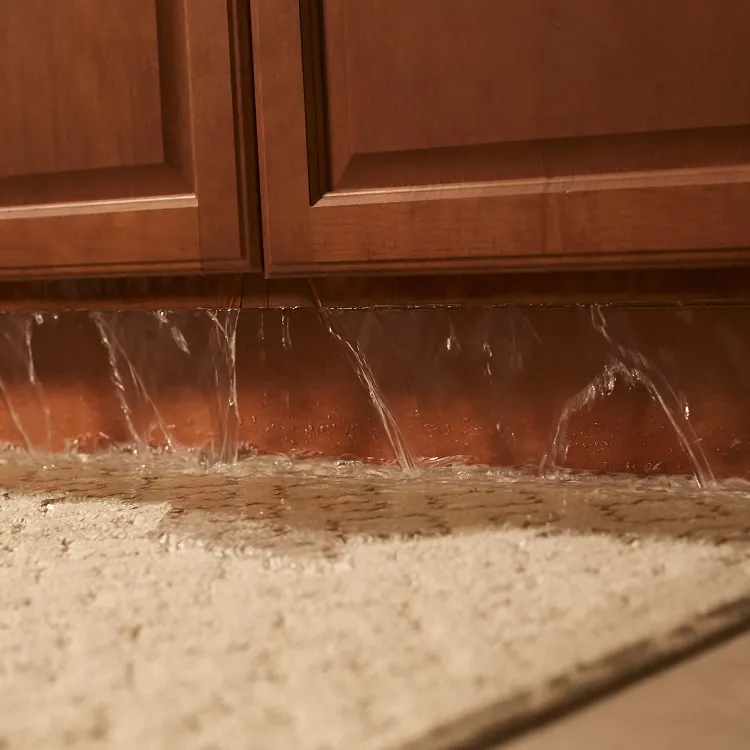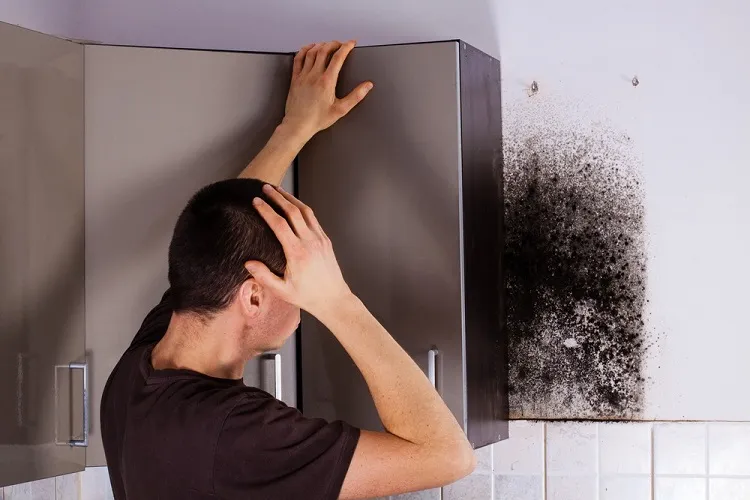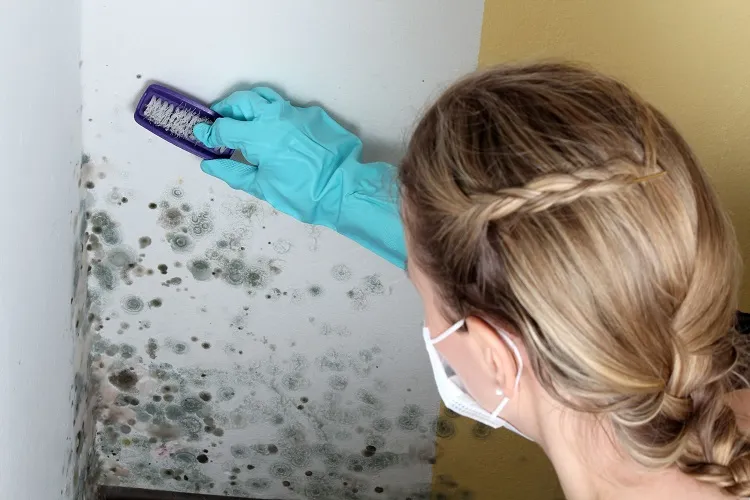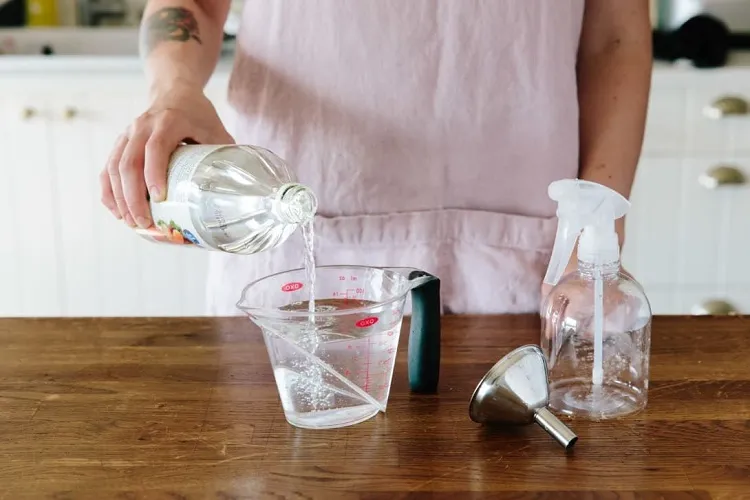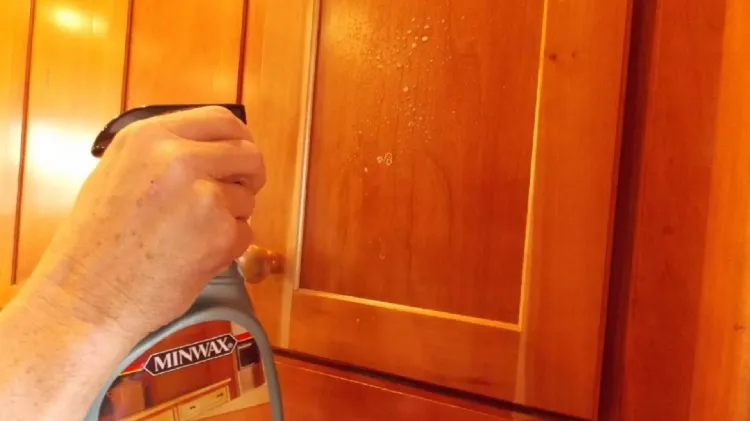It’s proved that the kitchen with its moisture environment, including cabinets, is the ideal place for black mold development. But how to clean their surfaces from the spores of this harmful agent, preventing from its future appearing in our drawers and cupboards? Finding the proper way to do it means we are already ready to get rid of black mold in kitchen cabinets. Let’s eliminate it entirely!
What Causes Black Mold in Kitchen Cupboards?
Black mold may appear and flourish only in humid places of your home. Unfortunately, kitchens often provide ideal conditions for its growth, as it’s the place for food preparation. So, this room is much more exposed to water spills, leaks, and condensation. When the ventilation is poor, these issues lead to moisture buildup, and the result is the development of mold spores. They grow and feed on organic materials like wood, drywall, and left food residue in the cabinets. In this situation, it’s vital to use the proper techniques to get rid of black mold in kitchen cabinets. It is only half of the problem, and after that, it is needed to eliminate the underlying reason of the issue, maintaining a moisture free kitchen environment.
Read also: How to Degrease Painted Kitchen Cabinets? – Fool-Proof Solutions That Won’t Damage the Surfaces!
Is Black Mold Toxic?
The appearance of black mold represents a health risks due to some substances, called mycotoxins, that it produces. They are typically released by certain types of mold, including the common species Stachybotrys chartarum. Its continuous presence can lead to respiratory problems, skin irritation, allergies, headaches, and other conditions. It is important to take black mold infestations seriously and eliminate it quickly to prevent its harmful effect on people’s health.
Can Mold Be Removed from Cabinets?
With some persistence, and eliminating the underlying reason of its appearance, you’ll probably be able to get rid of black mold in kitchen cabinets effectively. However, it is important to note that if the mold continues to grow actively, or in case the cabinets are substantially damaged, it may be necessary to consult with a professional mold remediation specialist to ensure thorough and safe removal.
Easy Way to Get Rid of Black Mold in Kitchen Cabinets
The first measure, which you should take to tackle with the mold issue, is to identify and cope with the source of moisture that is promoting its growth. Check if there are leaks in the plumbing fixtures, and restore the ones that lead to water damage and moisture in the kitchen. Then, do your best to improve ventilation in this room. Removing these underlying problems will be an important step to prevent future mold growth. Keep in mind that the process of its cleaning requires reliable safety gear. Your protection includes gloves, goggles, and a mask, because direct contact with mold spores and mycotoxins should be avoided. Another measure is to open windows or use fans to have a good ventilation during the cleaning process. Now, let you start treating the affected cabinets, firstly by taking out all items from inside and then clean the surfaces. It’s better to use a vacuum cleaner with a HEPA filter, which will remove the loose mold spores. After you’ve finished, wipe down the cabinets with a solution of detergent and warm water to get rid of visible mold growth. At last, rinse the cleaned surfaces with water and dry them out entirely.
Read also: How to Clean Mold off Window Sills? Eradicate It Permanently from There and Your Home Air!
How to Remove Black Mold from Wood Cabinets in Kitchen?
Cleaning black mold in wood cabinets need to be done carefully to prevent damage to their fine wood surfaces. It’s recommended to use this step-by-step process to effectively doing this:
- Preparation of vinegar solution: Mix equal parts of white vinegar and water and pour the solution into a spray bottle. Vinegar possesses natural antifungal properties and can efficiently kill mold.
- Small area testing: Before starting to remove the mold from the entire cabinet, test the solution on a small, inconspicuous spot of the wood to be sure that it doesn’t cause any discoloration or damage to this fragile surface.
- Apply and scrub: Spray the vinegar solution generously on the affected areas of the wood cabinet. With the help of a soft-bristle brush or a sponge, slightly scrub the infested surfaces. Act thoroughly, ensuring your treatment reaches all corners and possible crevices.
- Rinse well and wipe dry: After finishing your work, rinse the cabinets with water to remove any residual solution and mold spores. Wipe the treated surfaces dry with a clean cloth or, if it is warm, allow them to air dry entirely.
- Apply protective layer: Once the cleaned surfaces are dry, it’s recommended to apply a mold-resistant paint or primer to the wood. This measure provides an added protective layer against possible future mold growth.
Read also: How to Remove Mold from Walls Without Damaging Paint?

